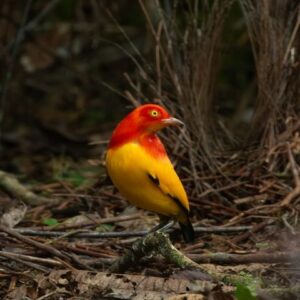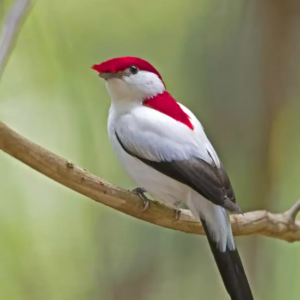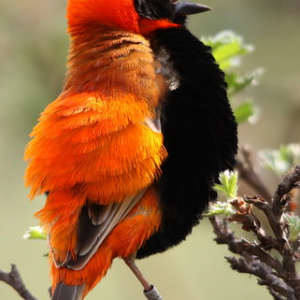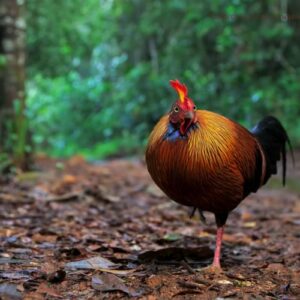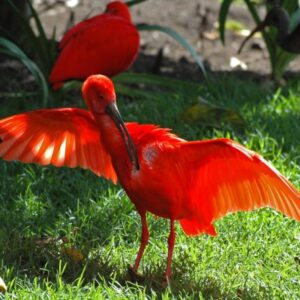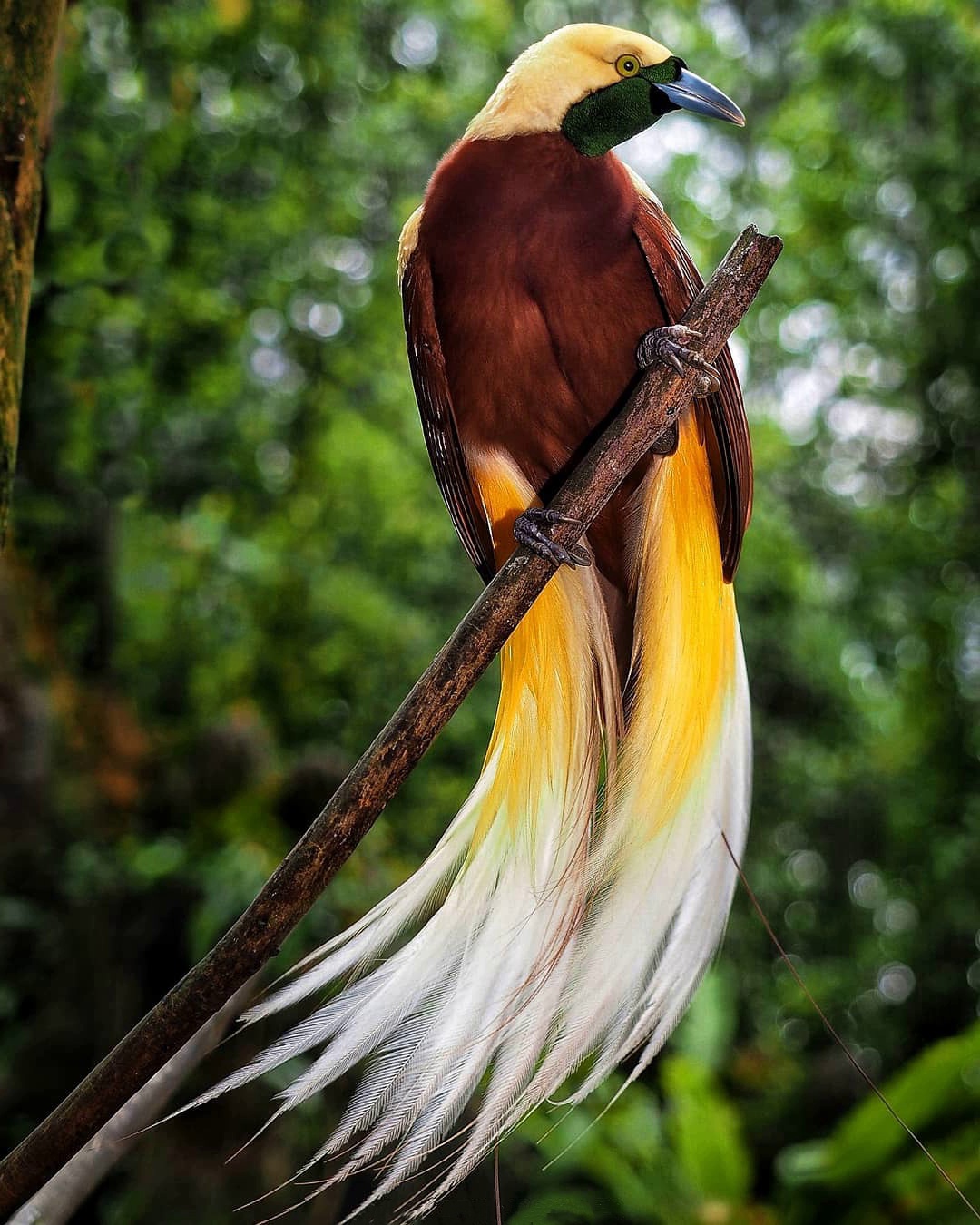
Paradise birds, a group that includes the magnificent “manucodes” and “riflebirds,” thrive in the lush landscapes of New Guinea and its neighboring islands.
These tropical wonders primarily inhabit rich rainforests, encompassing tropical forests, swamps, and mossy woodlands. Interestingly, some species have been discovered residing in coastal mangrove forests.


The vibrant plumage of paradise birds has made them prime targets for hunters, tragically leading to the extinction of certain species within this family. Indigenous tribes in New Guinea have long incorporated paradise bird feathers into their attire and rituals.
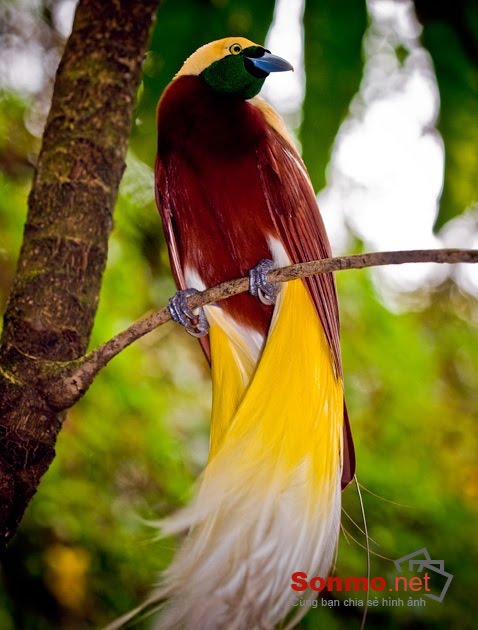
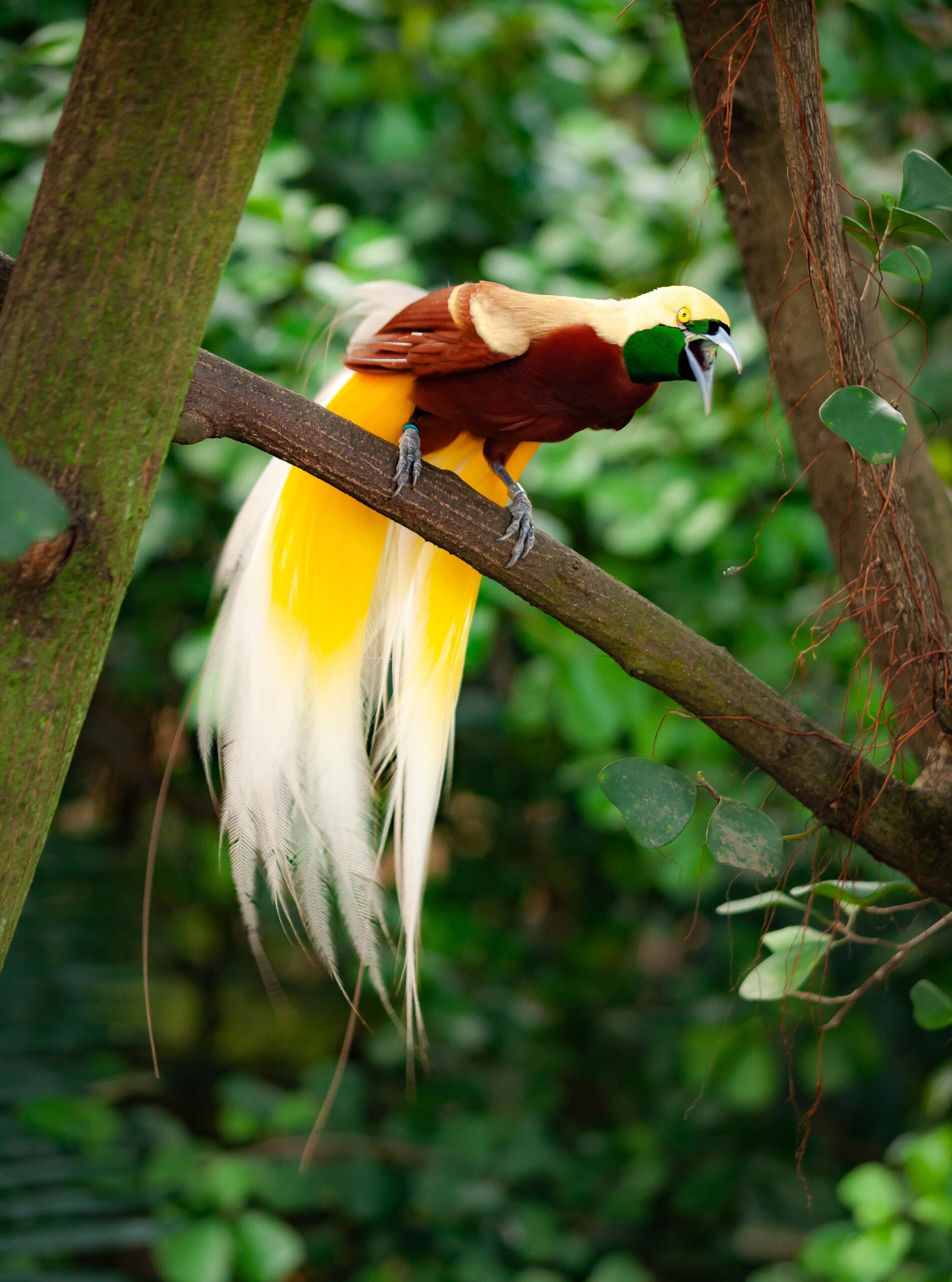
For centuries, these birds’ feathers were highly sought-after in Europe as decorative accessories for women, resulting in the mass slaughter of paradise birds.
Additionally, rampant deforestation has obliterated their natural habitats, prompting many countries to place them on the protected species list.

One of the most remarkable features of paradise birds is their unique dancing display, which enhances their already extraordinary appearance.
The male’s dance not only captivates the attention of females but also mesmerizes nearby observers, leaving them unable to tear their gaze away from these fascinating creatures.
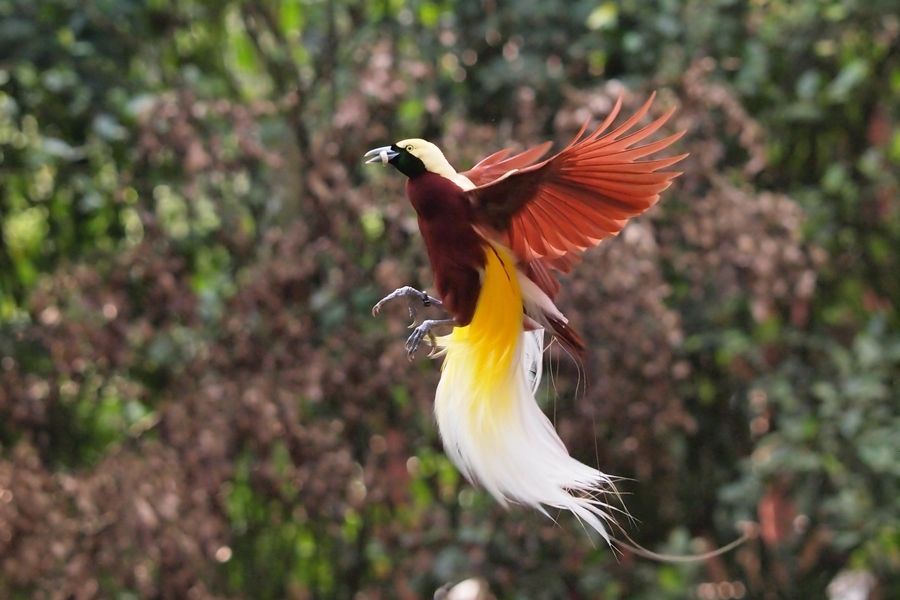
Another intriguing aspect of their behavior is the significant amount of time males dedicate to attracting mates. Paradise birds construct their nests using soft materials such as leaves, moss, and vine tendrils, often opting for tree hollows as nesting sites.
The number of eggs laid by paradise birds varies depending on the species’ size. Larger species typically lay a single egg, while smaller ones may produce 2 to 3 eggs per clutch.

After 16 to 22 days, the eggs hatch, and the fledglings leave the nest at around 16 to 30 days old, marking the beginning of their remarkable journey in the lush and vibrant ecosystems they call home.
